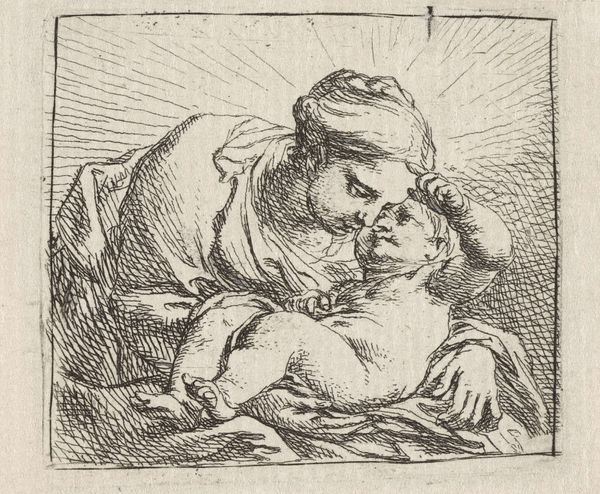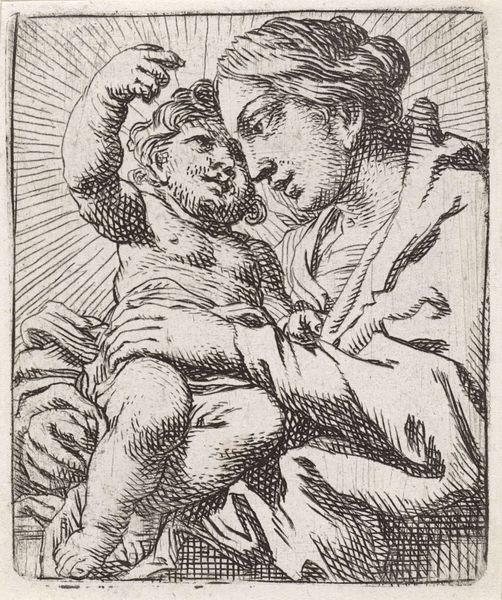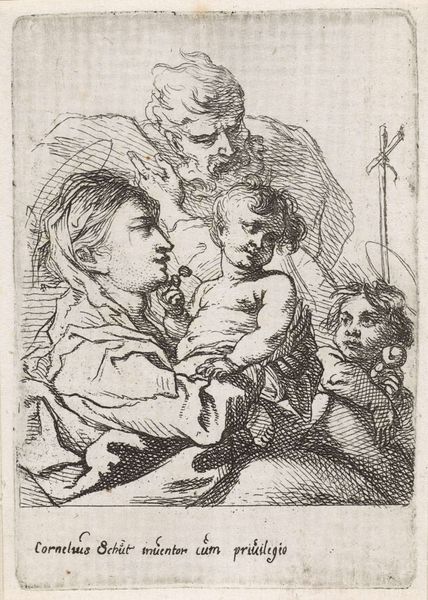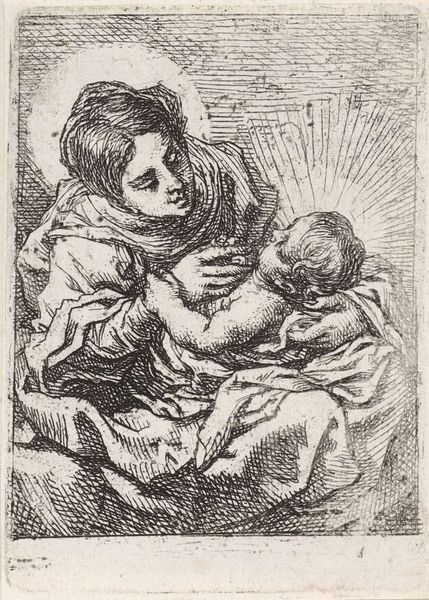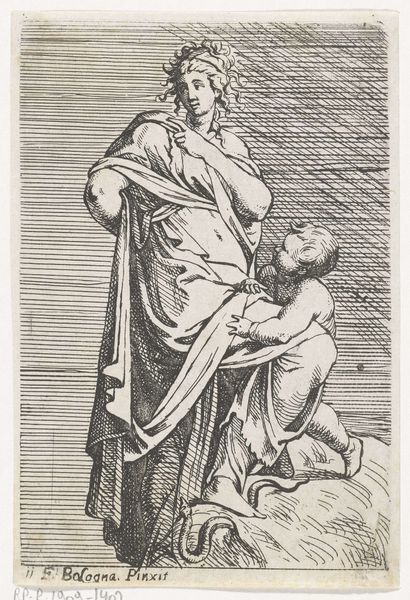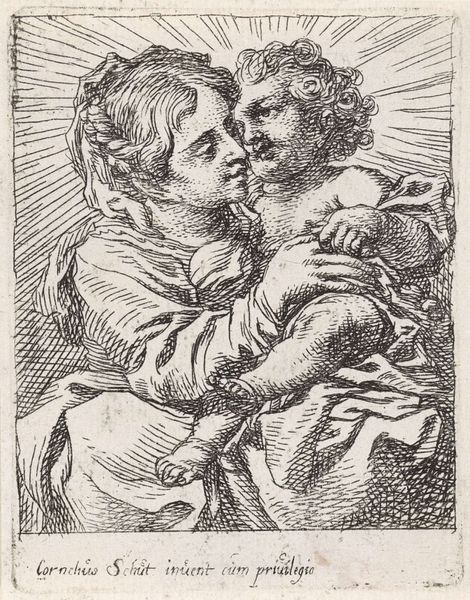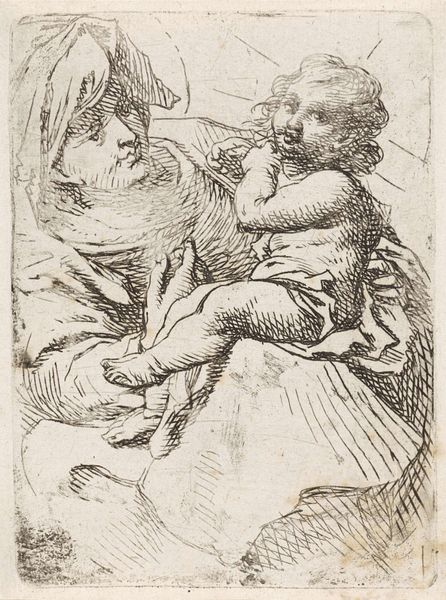
print, engraving
#
portrait
#
baroque
# print
#
figuration
#
engraving
Dimensions: height 95 mm, width 71 mm
Copyright: Rijks Museum: Open Domain
Editor: We're looking at Cornelis Schut's "Madonna met Kind," an engraving made sometime between 1618 and 1655, currently at the Rijksmuseum. It strikes me as a surprisingly intimate depiction for such a traditional subject, capturing a tender moment between mother and child. How do you interpret this work? Curator: This print offers a lens through which to examine the evolving roles and representations of women and motherhood within a patriarchal society. While seemingly pious, Baroque depictions of the Madonna and Child often functioned as visual vehicles for conveying societal expectations around female virtue, domesticity, and subservience. Consider the gaze of the Madonna: it's downward, internalized, reflective of a constrained agency. Does it evoke a sense of quiet strength or perhaps resignation? Editor: I see what you mean. It's easy to get caught up in the sweetness of the image, but looking closer, the mother's expression is complex. Curator: Precisely. Think, too, about the political context. This was a period of religious and political upheaval, with shifting power dynamics and evolving ideas about gender. The idealized image of the Madonna served as a powerful symbol, both reinforcing and subtly challenging established norms. Are we looking at a celebration of maternal love or a carefully constructed symbol deployed in a battle for hearts and minds? How does this engraving speak to the intersections of religion, power, and gender during the Baroque era? Editor: That really shifts my perspective. It's not just a pretty picture, it's a cultural artifact loaded with meaning. Curator: Indeed. By situating the work within its historical and social context, we unlock its potential to reveal the complex negotiations surrounding identity, gender, and power that shaped its creation. What did you get from this image now? Editor: It highlights how artistic expression reflects the social and political climate, and these common themes give artwork so much deeper depth. Curator: Absolutely! It's crucial that we view the artwork through the cultural context of its origins.
Comments
No comments
Be the first to comment and join the conversation on the ultimate creative platform.

